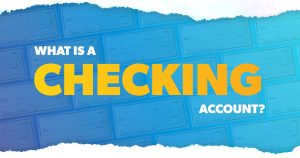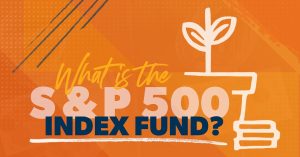Nonprofits have a variety of retirement plan options to help their employees save for the future. Popular choices include 403(b) plans, similar to 401(k) plans but tailored for nonprofit organizations, and 401(a) plans, which offer higher contribution limits. Additionally, SIMPLE IRAs and SEP IRAs cater to smaller nonprofits with simpler administrative requirements. Understanding the specific features and benefits of not-for-profit retirement plans can help nonprofit workers to make informed decisions about their financial futures.
403(b) Plans
403(b) plans are specifically designed for nonprofit organizations, including schools, hospitals and religious groups. These plans function similarly to 401(k) plans, allowing employees to defer a portion of their salary into the plan on a pre-tax basis. Employers can also make matching or discretionary contributions. The contribution limit for 2024 is $23,000, with an additional catch-up contribution of $7,500 for employees ages 50 and above (employees who have completed at least 15 years of service with a qualified organization can also get a lifetime limit of $15,000 of elective deferrals). 403(b) plans often include investment options like mutual funds and annuities.
457(b) Plans
457(b) plans are available to state and local government employees and certain nonprofits. These plans allow employees to defer compensation on a pre-tax basis, reducing their taxable income. The contribution limit for 2024 is $23,000, with a catch-up provision for those aged 50 and older allowing an additional $7,500. Unlike 401(k) and 403(b) plans, there is no early withdrawal penalty for distributions taken before age 59½, making 457(b) plans more flexible for those who may need access to funds earlier.
Defined Benefit Pension Plans

Defined benefit pension plans provide employees with a fixed, predetermined benefit at retirement, based on factors such as salary history and duration of employment. These plans can be more complex and costly to administer but offer a predictable income stream for retirees. Nonprofits with larger budgets and longer-term financial stability may consider defined benefit plans to attract and retain top talent.
Simplified Employee Pension (SEP) Plans
Simplified Employee Pension (SEP) plans are a popular choice among nonprofits. They allow employers to make tax-deductible contributions to individual retirement accounts (IRAs) set up for employees. Contributions are limited to the lesser of 25% of an employee’s compensation or $69,000 for 2024. SEPs are easy to set up and administer, making them ideal for smaller organizations with limited administrative resources.
SIMPLE IRAs
Savings incentive match plan for employees (SIMPLE) IRAs are tailored for smaller organizations with 100 or fewer employees. Employees can contribute up to $16,000 to a SIMPLE IRA in 2024. Meanwhile, employers must either match employee contributions up to 3% of their salary or make a fixed contribution of 2% of each eligible employee’s salary, regardless of the employee’s own contributions. SIMPLE IRAs are straightforward to establish and maintain, offering a balance of simplicity and benefits.
Nonqualified Deferred Compensation (NQDC) Plans
Nonqualified deferred compensation (NQDC) plans are used by some nonprofits to provide additional retirement savings opportunities for key executives. These plans do not have the same contribution limits as qualified plans like 403(b) and 457(b), allowing for greater flexibility in deferral amounts. NQDC plans are typically used to supplement other retirement plans and can be tailored to meet the specific needs of the organization and its leadership.
401(a) Plans

The 401(a) plan is a retirement plan typically established by government employers and educational institutions. These plans are highly customizable, allowing employers to set contribution limits, eligibility requirements and vesting schedules. Employers often use 401(a) plans to provide mandatory contributions to employees’ retirement savings, supplementing other retirement benefits. In 2024, employees can contribute up to $69,000 to a 401(a) account.
Nonprofit-Specific 401(k) Plans
While less common, some nonprofits do offer 401(k) plans. These plans operate similarly to 403(b)s but are more familiar to employees who have worked in the private sector. Nonprofit 401(k)s provide an attractive option for organizations looking to match contributions or offer a Roth option, where contributions are made post-tax, but withdrawals in retirement are tax-free.
Bottom Line
Nonprofits have a wide array of retirement plan options to support their employees’ financial futures, from 403(b) and 457(b) plans to SEP IRAs and SIMPLE IRAs. These plans offer various benefits, from pre-tax savings and employer contributions to simplified administration tailored for smaller organizations. Defined benefit pension plans and NQDC plans also provide tailored solutions for larger nonprofits and key executives.
Retirement Planning Tips
- If you have a pre-tax retirement account like a 403(b) or 401(k), it’s important to plan for required minimum distributions (RMDs). You must start these mandatory withdrawals by age 73 (or 75 if you turn 74 after Dec. 31, 2032) or face a tax penalty. SmartAsset’s RMD calculator can help you estimate how much your first RMD will be and when you’ll need to take it by.
- Whether you work at a for-profit company or nonprofit organization, a financial advisor can help you plan and save for retirement. Finding a financial advisor doesn’t have to be hard. SmartAsset’s free tool matches you with up to three vetted financial advisors who serve your area, and you can have a free introductory call with your advisor matches to decide which one you feel is right for you. If you’re ready to find an advisor who can help you achieve your financial goals, get started now.
Photo credit: ©iStock.com/Kosamtu, ©iStock.com/SDI Productions, ©iStock.com/SDI Productions
Read the full article here
















